|
|
|
 |

 |
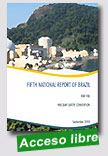 |
Fifth National Report of Brazil for the Nuclear Safety Convention
Comissão Nacional de Energia Nuclear (CNEN), Eletrobrás Termonuclear S. A (ELETRONUCLEAR) and Central Organization for the Protection of the Brazilian Nuclear Program (SIPRON), September 2010, 103 p.
On 20 September 1994 the Convention on Nuclear Safety was open for signature at the headquarters of the International Atomic Energy Agency in Vienna. Brazil signed the Convention in September 1994, and deposited the instrument of ratification with the Depositary on 4 March 1997.
|
The Convention objective is to achieve and maintain a high level of nuclear safety throughout the world. One of the obligations of the Parties to the Convention is the preparation of a periodical National Report describing the national nuclear program, the nuclear installations involved according to the Convention definition, and the measures taken to fulfill the objective of the Convention.
The first National Report was prepared by a group composed of representatives of the various Brazilian organizations with responsibilities related to nuclear safety, and presented to the Parties of the Convention in September 1998. The Second, Third and Fourth National Reports of Brazil were prepared to update the information provided in the previous Reports
This Fifth National Report is a new update to include relevant information for the period of 2007/2009.
Extraído de:
http://www.cnen.gov.br/seguranca/documentos/5NationalReportDraft5I.pdf
|
 |
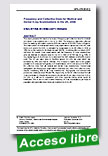 |
Frequency and Collective Dose for Medical and Dental X-ray Examinations in the UK, 2008
Health Protection Agency (HPA - UK), December 2010, 58 p.
This report presents the results of a study of frequency and collective dose for medical and dental X-ray examinations in the UK in 2008. The frequency data were collected from the radiology information systems (RIS) at a sample of 29 NHS Trusts in England. The total number of medical and dental X-ray examinations carried out in the UK, both inside and outside the NHS, is estimated by extrapolation to be 46 million in 2008, a 10% rise on the number for the financial year 1997/98. |
Combining effective doses (2007 definition) for specific X-ray examinations with the frequency of those examinations gives an estimate of collective dose for the UK in 2008 of 24,700 man Sv (+ 12%). A very similar figure of 24,250 man Sv is obtained if the 1991 definition of effective dose is used. The UK per caput dose is therefore around 0.4 mSv per year, which has increased by 23% over that for 1997/98. This increase is mainly due to the greater prevalence of computed tomography (CT) examinations, which now account for 68% of the collective dose from all medical and dental X-ray examinations. Conventional radiographic and fluoroscopic examinations contribute only 19% of the collective dose, despite constituting 90% of all X-ray examinations. Angiography and interventional procedures contribute about 5% and 8%, respectively, to the UK collective dose from all X-ray examinations. Despite the increase in the annual UK per caput dose from 0.33 to 0.4 mSv, it is still low in comparison with other countries having similar levels of healthcare. This is due to both a lower frequency of X-ray examinations per head of population and generally lower doses per examination in the UK.
Extraído de:
http://www.hpa.org.uk/web/HPAweb&HPAweb
Standard/HPAweb_C/1287148000829 |
 |
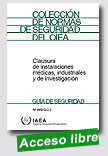 |
Clausura de Instalaciones Médicas, Industriales y de Investigación
OIEA Colección de normas de seguridad, 21 December 2010, 50 p.
El objetivo de esta Guía de Seguridad es prestar asesoramiento a las autoridades nacionales, comprendidos los órganos reguladores, y los operadores para garantizar que el proceso de clausura de las instalaciones médicas, industriales y de investigación en las que se producen, reciben, utilizan y almacenan materiales y fuentes radiactivos se gestiona de manera segura y aceptable para el medio ambiente |
Extraído de:
http://www-pub.iaea.org/MTCD/publications/PDF/Pub1078s_Web.pdf |
 |
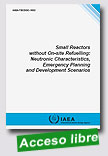 |
Small reactors without on-site refuelling have a capability to operate without reloading or shuffling of fuel in their cores for reasonably long periods of time consistent with plant economy and considerations of energy security, with no fresh or spent fuel being stored at the site during reactor operation. In 2009, more than 25 design concepts of such reactors were analyzed or developed in IAEA Member States, representing both developed and developing countries. Small reactors without on-site
|
refuelling are being developed for several reactor lines, including water cooled reactors, sodium cooled fast reactors, lead and lead bismuth cooled reactors, and also include some non-conventional concepts.
Most of the concepts of small reactors without on-site refuelling reactors are at early design stages. To make such reactors viable, further research and development (R&D) is necessary, inter alia, to validate long-life core operation, define and validate new robust types of fuel, justify an option of plant location in the proximity to its users, and examine possible niches that such reactors could fill in future energy systems.
To further research and development (R&D) in the areas mentioned above and several others, and to facilitate progress in Member States in design and technology development for small reactors without on-site refueling, the IAEA has conducted a dedicated Coordinated Research Project (CRP) entitled ‘Small Reactors without On-site Refuelling’ (CRPi25001). The project started late in 2004 and, after a review in 2008, was extended for one more year to be ended in 2009. The project has created a network of 18 research institutions from 10 Member States, representing both developed and developing countries.
Extraído de:
http://www-pub.iaea.org/MTCD/publications/PDF/te_1652_web.pdf |
 |
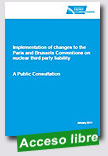 |
Implementation of changes to the Paris and Brussels Conventions on nuclear third party liability: a public consultation
Department of Energy & Climate Change, 24 January 2011, 92 p.
This consultation seeks views on the UK's proposed implementation of amendments to the Paris Convention on nuclear third party liability and Brussels Supplementary Convention. Among other aims the Conventions ensure that victims of a nuclear incident can easily get compensation for damage as a result of a nuclear incident. |
The aim of the proposals is to update of the Nuclear Installations Act 1965 in order to incorporate changes agreed in 2004 to the Paris and Brussels Conventions. The main changes proposed are in three areas: Increase in the categories of damage for which operators are liable including damage related to the environment; Widening the geographical scope of those that are eligible to claim compensation; A significant increase in the financial liability of the operator from currently £140 million to €1200 million.
Extraído de:
http://www.decc.gov.uk/en/content/cms/consultations/
paris_brussels/paris_brussels.aspx |
 |
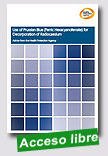 |
Use of Prussian Blue (Ferric Hexacyanoferrate) for Decorporation of Radiocaesium
Health Protection Agency (UK), December 2010, 94 p.
This document provides advice on the use of Prussian Blue (ferric hexacyanoferrate) as a decorporation agent in the event of poisoning with radiocaesium. It has been developed by the Health Protection Agency in partnership with a number of organisations using the scientific evidence available and advice from other countries.
The advice covers how radiocaesium contamination would be
|
detected in the population and requirements for triage, dose assessment and monitoring, including timing and guidelines for the internal contamination levels at which treatment is advised. It also covers doses for adults and children, side-effects, duration of treatment and on-treatment monitoring. There is an appendix with draft public information leaflets for use in a contamination event, based on the proposed triage, monitoring and treatment guidelines.
Prussian Blue is a medical treatment, not suitable for mass distribution. The advice does not cover the logistics of arranging for prescription of this treatment in the NHS nor the use of Prussian Blue as an antidote for thallium poisoning.
Extraído de:
http://www.hpa.org.uk/Publications/Radiation/
DocumentsOfTheHPA/RCE17UseofPrussianBlue/
|
 |
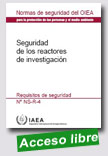
|
Seguridad de los Reactores de Investigación
OIAEA Colección de normas de seguridad, 30 December 2010, 153 p.
El principal objetivo de la presente publicación de la serie de Requisitos de seguridad es establecer los principios básicos de seguridad y de evaluación de la seguridad para todas las etapas de la vida útil de un reactor de investigación. Otroobjetivo es establecer requisitos sobre los aspectos relacionados con el control reglamentario, la gestión de la seguridad, la evaluación de emplazamientos, el diseño, la explotación y la clausura.
|
Los requisitos técnicos y administrativos para la seguridad de los reactores de investigación se establecen con arreglo a estos objetivos. La presente publicación de la serie de Requisitos de seguridad está destinada a las entidades que participan en las actividades de evaluación de emplazamientos, diseño, fabricación, construcción, explotación y clausura de reactores de investigación, así como a los órganos reguladores
Extraído de: http://www-pub.iaea.org/MTCD/publications/PDF/Pub1220s_web.pdf |
 |
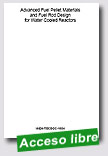 |
Advanced Fuel Pellet Materials and Fuel Rod Design for Water Cooled Reactors
IAEA TECDOC Series, 2010, 241 p.
The purpose of the meeting was to review the current status in the development of fuel pellet materials and to explore recent improvements in fuel rod designs for light and heavy water cooled power reactors. The meeting was attended by 45 specialists representing fuel vendors, nuclear utilities, research and development institutions and regulatory authorities from 20 Member States. The papers submitted to the meeting were organized into three sessions, covering the areas of fabrication
|
and design, advanced fuels and innovative fuel designs. In addition, there was a special round table discussion that addressed in detail the regulatory aspects of fuel quality assurance. These proceedings contain all the papers presented and discussed during the meeting, and highlight the key findings and recommendations based on the perceptions of the chairmen.
Extraído de:
http://www-pub.iaea.org/MTCD/publications/PDF/te_1654_web.pdf |
 |
| |
|
|
|
|
|
|
|
|
|
|
